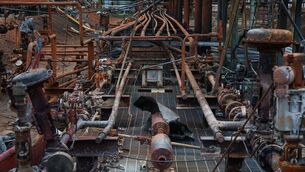Roman amphitheatre older than Colosseum gets accessible facelift for Winter Paralympics

The Arena di Verona will be fitted with a lift and toilets to become ‘the symbol of our Paralympic Games’, says Milano-Cortina 2026 chief executive, Andrea Varnier. Picture: PR
A 2,000-year-old Roman amphitheatre is to be made fully accessible to people with disabilities before the Winter Paralympic Games in Milano‑Cortina, as organisers prioritise legacy with 100 days to go.
The conversion of the Arena di Verona, which will host the Paralympics opening ceremony, includes the addition of a lift and toilets to a structure older than the Colosseum. Described by the Milano-Cortina 2026 chief executive, Andrea Varnier, as “the symbol of our Paralympic Games”, he admits the conversion has also been considered as an act of “blasphemy” by some traditionalists.
“The decision to stage the opening ceremony in the Arena di Verona is not just an aesthetic one although, of course, we like to showcase such a beauty,” Varnier said. “But it was also an idea, to make the arena accessible and not only the arena itself but the entire route from the railway station to the venue.
“Now they’re going to build an elevator, which for the purists of classic monuments, this is a blasphemy to build an elevator in a Roman amphitheatre. But now that will be there. And we think it’s part of things that change. It’s also a very strong message.”
Varnier said the refurbishment of the arena, which has cost €20m, will form a central plank of the Games’ legacy alongside an expansion of accessible public transport, and funding for education and training of winter para‑sports. He hopes these actions will help to facilitate the growth of winter para‑sports in what he admitted is a “challenging” environment.
In another initiative, one that will apply to both the Winter Olympic and Paralympic Games, Varnier has pledged that the “critical” process of artificial snow manufacturing will be conducted without the use of chemicals.
“We know that with climate change, snowmaking becomes critical,” he said.
“But a new system we have put in place means we can use water without harming the local ecosystem and the new machinery for snowmaking uses only water. No chemicals are added in any of our snowmaking technologies. So it’s real snow, even if it’s artificially made.”
The Winter Paralympics will feature athletes from 50 countries competing in six para-events: alpine skiing, biathlon, cross-country skiing, ice hockey, snowboard and wheelchair curling. Varnier would not disclose the number of tickets sold for the Games but admitted there was work to be done.
“[Spectators] are now focused on the Winter Olympic Games and this is a bit unfortunate because we would love to see [ticket sales] going really in parallel,” he said. “Unfortunately, it’s always like this and we were not able to disrupt this pattern. So we still need to trigger the ticket sales but again we are very confident because we are exactly in the same position as our colleagues were in Paris, so it’s normal.”
Asked what he thought would mark the Games as a success, Varnier said that “in some ways it’s already been a success because of the legacy that we’ll leave, I will never stop underlining that”. He argued that the Games should be viewed as layering another “small brick” in the growth of the Paralympic movement.
“To grow winter sports is more challenging and we know that,” he said. “We know that the complex environment makes it more challenging. But we hope that we will give another small brick in making this an even larger and more widespread movement for everyone.”












